Argentina has a northern border with Brazil and after the latter, it is the second-largest country in South America. Its western border is the Andes and the eastern the South Atlantic, with a coastline that stretches for 4,725 kilometres (2,950 miles). It has a long history with the Incas stretching into its northern regions but it is Spanish colonisation that really defines the country. That was in the 16th century and further European settlement, especially Italian and Spanish followed from the middle of the 19th century.
Buenos Aires on the River Plate (the border with Uruguay) is the capital and largest city but there are a number of sizeable cities throughout the country. Independent since 1818, Argentina has had periods of political and economic instability over the years, and periods of dictatorship as recent as the early 1980s. Besides Incan and Spanish history, what is Argentina known for? Its rich culture and cuisine are famous, with Argentinian wines increasingly popular. Sport, especially soccer, is a passion while the natural environment is as rich as anywhere in the world. Here’s what Argentina is famous for.
Contents
What Is Argentina Known For?
Top Tours
- 4-Day Trip to Mendoza and The Andes – discover the vineyards and mountains of Argentina.
- Piazzolla Tango Show – with optional dinner.
- From Puerto Iguazu: Argentinian Iguazu Falls with Ticket – a stunning natural wonder not to be missed.
1- Gauchos
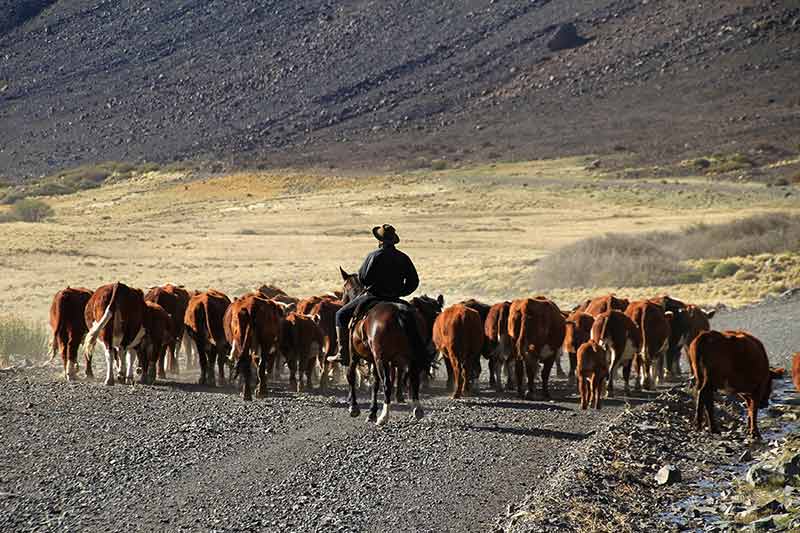
Gauchos are the South American equivalent to the cowboys of the Wild West.
They are highly skilled horsemen working on ranches in Argentina, as well as neighbouring countries.
Argentina is famous for its beef and gauchos’ role is to tend the large herds of cattle that produce this famous Argentinian export.
Historically, gauchos were seen as brave, if rather undisciplined.
In Portuguese the word means “an inhabitant of the plains of Rio Grande do Sul or the Argentinian pampas”.
In the Quecha language, huachu means “orphan” or “vagabond.” Historically, gauchos were nomadic, taking jobs on a temporary basis then moving on.
Their role in the fight for independence from the Spanish cannot be underestimated.
They remain horsemen who may move from job to job in Patagonia.
Their “dress” includes a beret, known as a boina and the bombachos, loose fitting trousers, woollen poncho and a dance called malambo.
Recommended tour: From Buenos Aires: Gaucho and Ranch in San Antonio de Areco
2- Patagonia
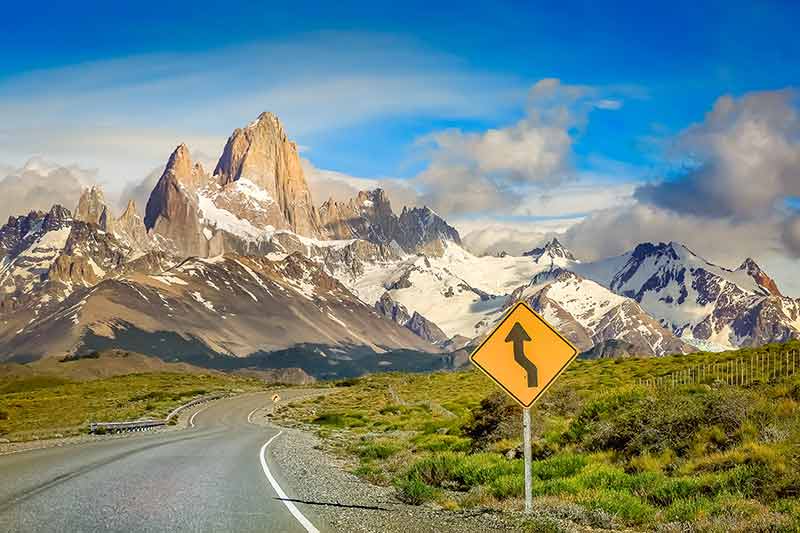
Patagonia is in the south of Argentina and it includes a portion in nearby Chile.
It includes the Andes, fjords and lakes, glaciers and temperate rainforest.
Its border to the west is the Pacific and to the east the South Atlantic.
In the east, there is desert and steppe.
The northern boundary is the line created by the Colorado and Barrancas rivers.
To the south, there is Tierra del Fuego and the treacherous Cape Horn.
When the Spanish arrived, the population of Patagonia was indigenous, some living by hunting, others agriculture.
It was from the 19th century onwards that increasing numbers of settlers went to Patagonia, including Europeans with indigenous populations dying out.
These days, the economy depends on sheep farming and gas and oil in the east, fishing, particularly salmon aquaculture and tourism in the west.
Recommended tour: El Calafate: Perito Moreno Glacier & Optional Boat Cruise
3- Tierra del Fuego
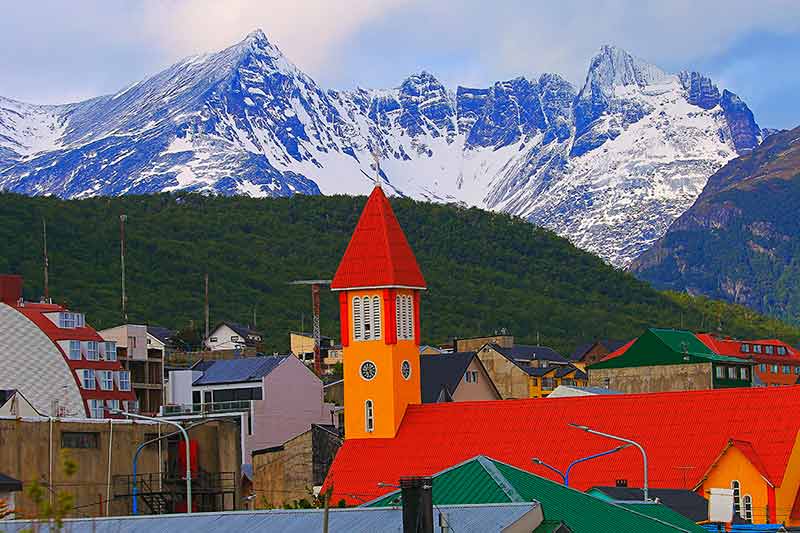
Tierra del Fuego (land of fire in English) is an archipelago on the southern tip of South America between the mainland and the Strait of Magellan.
The main island is Isla Grande with other islands including the Ramirez Islands and Cape Horn.
While people have lived here since 8,000BC, it was Ferdinand Magellan who arrived in 1520 who was the reason for the region being known to the world.
It was three centuries later before significant European settlers arrived to begin sheep farming.
There was also a “gold rush” back in the second half of the 19th century.
Petroleum is now the most important economical activity with manufacturing and significant tourist numbers also important.
Tierra del Fuego plays an important role in activities relating to Antarctica, in tourism but also research and logistics.
Recommended tour: End of the World Train & Tierra del Fuego National Park
4- The Andes
The Andes are the western spine of South America; the longest mountain range in the world, measuring 8,900 kilometres (5,530 miles).
They are 700 kilometres (435 miles) at their widest point but only 200 kilometres (125 miles) at their narrowest.
They begin in the very north of South America and geologically continue beyond South America to Antarctica.
The Andes Mountains are the highest mountain range after the Himalayas with an average height of 4,000 metres (13,120 feet) yet the highest, Aconcagua is approaching 7,000 metres (almost 23,000 feet).
The highest volcanoes in the world are on the Chile-Argentine border with outside Asia.
Ojos del Salado nearly as high as Aconcagua.
Recommended tour: Mendoza: Horseback Riding in the Andes with Authentic BBQ
5- Aconcagua
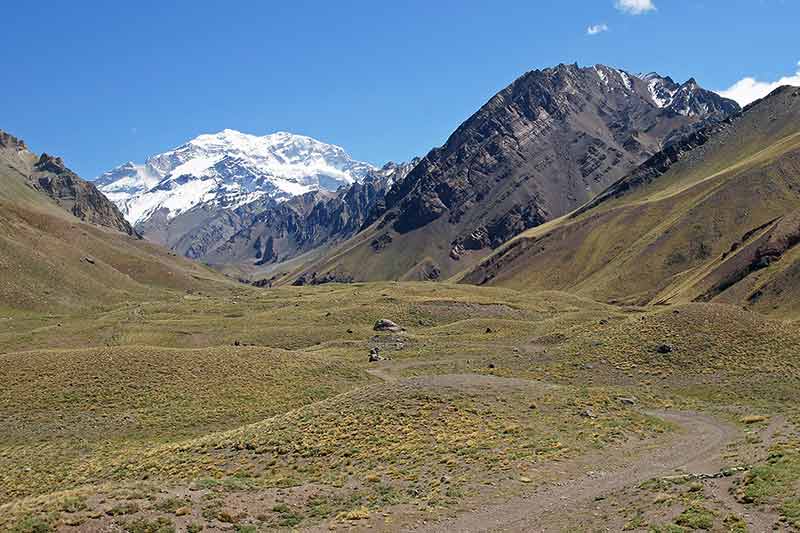
Aconcagua is the highest mountain in the Americas, and the highest outside Asia.
It lies just to the right of the highway between Mendoza (the main wine centre in Argentina) and Chile.
The distance between Mendoza and Aconcagua is 112 kilometres (70 miles) and the Chilean border is just 15 kilometres (9 miles) away.
It is just short of 7,000 metres (almost 23,000 feet).
Aconcagua has many glaciers and is in the heart of a Provincial Park of the same name.
The largest glacier is Ventisquero Horcones Inferior, 10 kilometres (6 miles) in length.
It is around halfway up the south face.
Another important glacier is the Polish Glacier which is a popular ascent route.
There are tours that take experienced mountaineers to the summit.
It is a difficult hike and requires mountaineers to be acclimatised to high altitude.
Recommended tour: From Mendoza: High Andes Aconcagua Mountain Tour
You may also be interested in:
- What is Turkey known for?
- What is Portugal known for?
- What is Greece known for?
- What is France known for?
- What is Belgium known for?
- What is Switzerland known for?
- What is Poland known for?
- What is Australia known for?
- What is Mexico known for?
- What is Germany known for?
- What is Croatia known for?
- What is Hungary known for?
- What Is Romania known for?
- What is The Netherlands known for?
- What is Scotland known for?
- What is Canada known for?
- What is Japan known for?
- What is China known for?
- What is Singapore known for?
- What is Vietnam known for?
- What is Thailand known for?
- What is Cuba known for?
- What is Argentina known for?
- What is Colombia known for?
- What is Spain known for?
- What is Italy known for?
- What is Ireland known for?
- What is Oregon known for?
- What is Colorado known for?
- What is Tennessee known for?
- What is Hawaii known for?
- What is Alabama known for?
- What is Illinois known for?
- What is Mississippi known for?
- What is Nevada known for?
- What is Maine known for?
- What is Idaho known for?
- What is Delaware known for?
- What is Maryland known for?
- What is Wisconsin known for?
- What is Miami known for?
- What is Virginia known for?
- What is West Virginia known for?
- What is Massachusetts known for?
- What is Boston known for?
- What is Florida known for?
- What is Kentucky known for?
- What is Indiana known for?
- What is Montana known for?
- What is Nebraska known for?
- What is Pennsylvania known for?
- What is Vermont known for?
- What is Arizona known for?
- What is California known for?
- What is South Carolina known for?
- What is North Carolina known for?
- What is Texas known for?
- What is Michigan known for?
- What is Ohio known for?
- What is Louisiana known for?
- What is Oklahoma known for?
- What is New York known for?
- What is Georgia known for?
- What is Utah known for?
- What is Connecticut known for?
- What is Rhode Island known for?
- What is Iowa known for?
- What Is Minnesota known for?
- What is New Hampshire known for?
- What is Arkansas known for?
- What is New Jersey known for?
- What is Missouri known for?
- What is North Dakota known for?
- What is South Dakota known for?
- What is Wyoming known for?
- What is Alaska known for?
- What is Washington known for?
- What is Seattle known for?
- What is New Mexico known for?
- What is Kansas known for?
- What is San Francisco known for?
- What is Chicago known for?
- What is Denmark known for?
- What is Norway known for?
6- Iguazu Falls
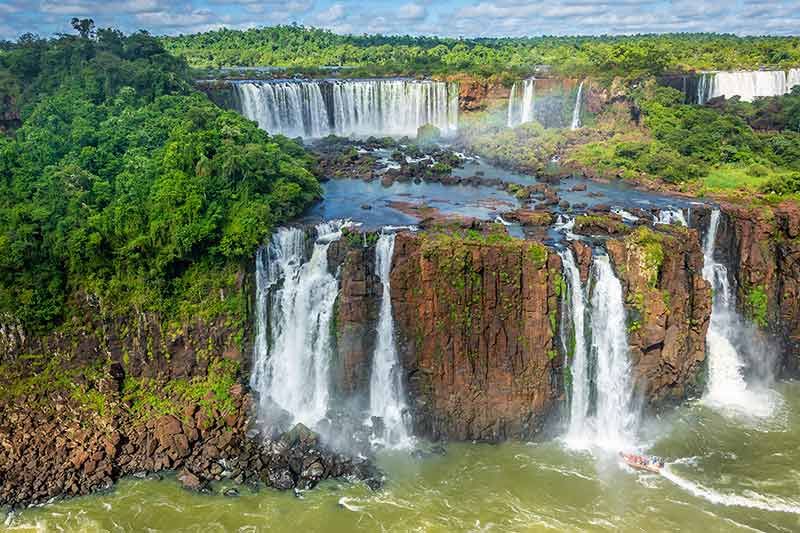
When Eleonor Roosevelt first saw Iguazu Falls, she said “My poor Niagara.” The numerous cataracts of Iguazu make it far more impressive than Niagara.
Huge numbers of tourists visit the Falls that are on the boundary with Brazil.
They are absolutely stunning, with more than 270 cataracts and you can walk from its base on a winding path right to the top.
You can also take a boat to the bottom of the Falls.
The Iguazu Falls can be seen from the Brazilian side but Puerto Iguazu National Park in Argentina allows visitors to walk out across to river to almost touch cataracts.
It was no surprise when UNESCO designated them as a World Heritage Site in 1984.
The Iguazu National Park has a large number of animals and flora and hence is a very important natural ecosystem within Latin America.
Recommended tour: Iguazu Falls 2 Days – Argentina and Brazil Sides
7- Valdes Peninsula
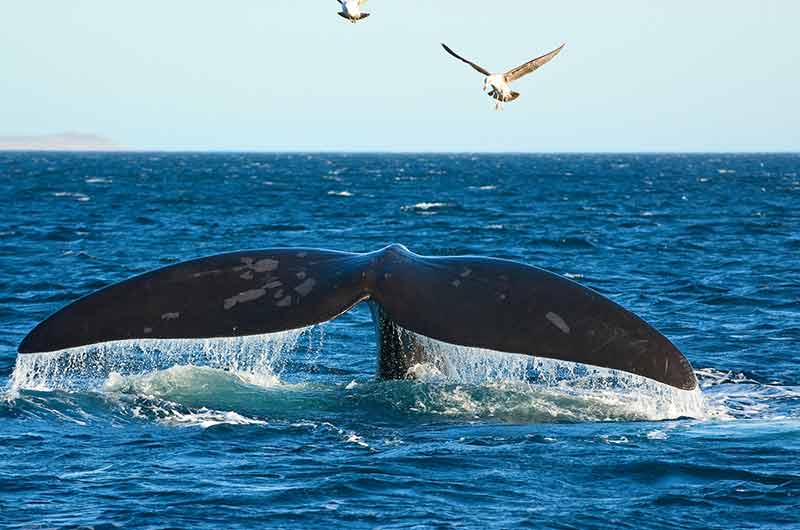
This UNESCO World Heritage Site on the South Atlantic Ocean is an important nature reserve.
It is in Patagonia with Puerto Madryn the nearest large town.
There are a few sheep farms on the peninsula and a small town, Puerto Piramides.
Most of the peninsula is barren land with some small salt lakes, some below sea level.
The coastline is famous for its marine mammals, notably fur seals, sea lions and elephant seals.
This is also a breeding area for the Southern Right Whale which arrive in May and leave in December.
This is a protected area yet nothing protects the marine mammals from Killer Whales which have taught themselves to actually “beach” to catch prey before wriggling themselves back into the water.
On the land, you can expect to see rheas, maras and guanacos.
The birdlife is spectacular with over 180 different species, a third of which are migratory.
Recommended tour: Valdes Peninsula Full-Day Tour from Puerto Madryn
8- Buenos Aires
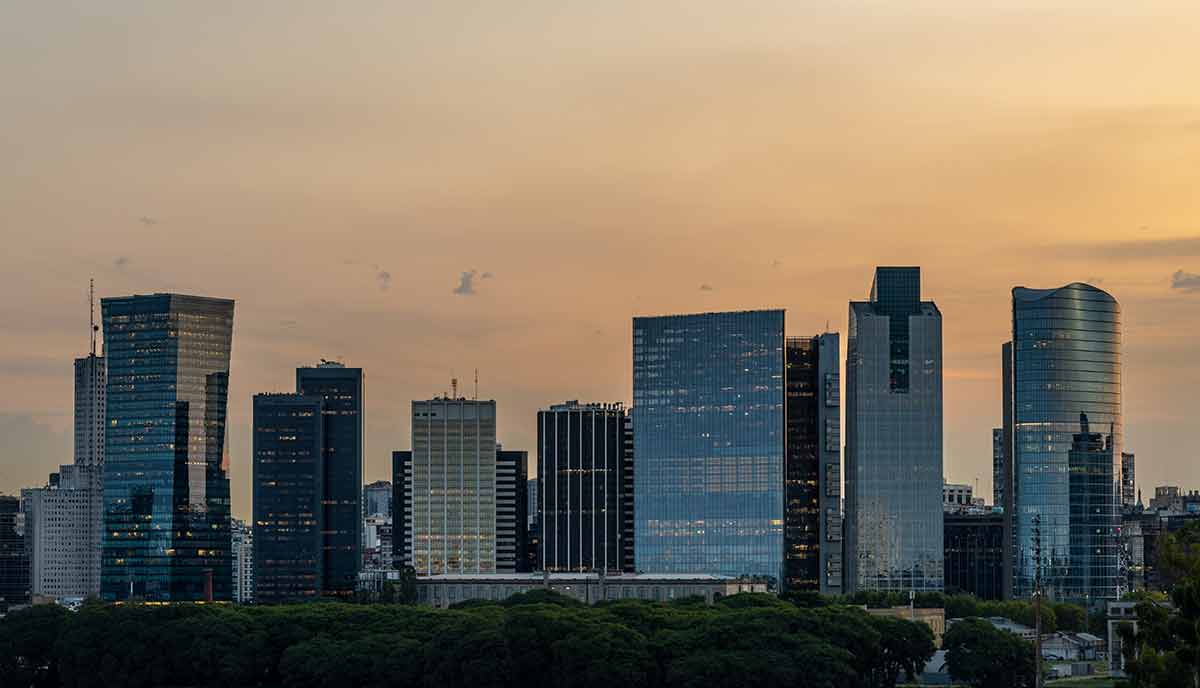
The national capital, Buenos Aires, is on the banks of the River Plate that divides Argentina from Uruguay.
It is autonomous from the province of the same name.
The greater metropolitan district has a population of almost 14 million.
It is a hugely popular city for tourists and many visitors say it has the feel of a European capital largely because of its architecture.
It is very multicultural in several aspects; ethnic, religious and cuisine.
Catalan missionaries and Jesuits came here as early as the 14th century.
A huge number of highlights await visitors to Buenos Aires.
They include the presidential palace, Casa Rosada, the huge opera theatre, Teatro Colon, the Recoleta Cemetery and Eva Peron’s tomb.
The restaurants and nightlife in general are excellent while you are able to see open-air performances of the tango in some neighbourhoods.
The colours of the houses in La Boca are impressive and if you enjoy soccer, perhaps you will get the chance to watch Boca Juniors, one of the iconic clubs in the country, play.
Recommended tour: Buenos Aires: Hop-On Hop-Off City Bus Tour
9- Evita
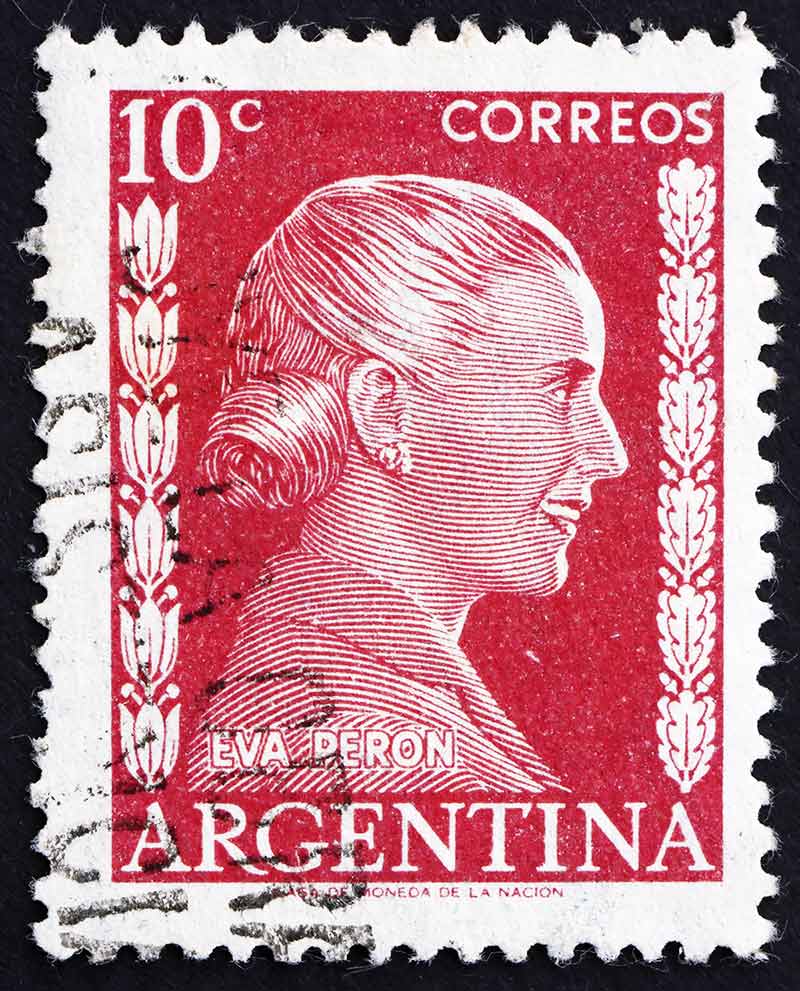
Eva Perón is a legend, the wife of the Argentinian President Juan Domingo Peron.
The First Lady was born into poverty but became even more important in the eyes of the population than her husband who became President in 1946.
She had come to Buenos Aires in her teens seeking work in show business and films.
She met Peron in 1944 when she was 25 and Peron was almost 50.
They married the following year.
Unfortunately, she died seven years later at the age of only 33.
She championed ordinary workers and ran the Labour and Health Ministries.
She was also a champion of women’s suffrage and formed a female political party.
Her death ended many of her plans but she got a State Funeral.
Her body’s final resting place is in the Cemetery in Recoleta but before that the Argentia military had taken her embalmed corpse elsewhere.
Eva Peron has been remembered in the hit musical “Evita” in 1976 and subsequent film (1996) starring Madonna.
Recommended tour: Private Evita and Peronism Historical Tour in Buenos Aires
10- Soccer

Soccer is part of Argentina’s culture.
It engenders serious passion in the spectators, as well as in players on the pitch.
The game was actually introduced to the country by British settlers in the 19th century.
Huge numbers participate in playing the game, and top matches see grounds filled to capacity.
That is especially the case in Buenos Aires where Boca Juniors and River Plate have a huge rivalry.
Argentina hosted the 1978 World Cup and won it for the first time beating the Netherlands in the Final.
Eight years later Argentina, led by Digo Maradona won again, beating West Germany 3 – 2 in Mexico City.
Argentina’s third win in 2022 was hugely popular with fans of Lionel Messi, arguably the greatest player ever who has won everything in soccer other than the World Cup.
Argentina bet France on penalties after drawing 3 – 3.
Argentina has also had huge success at the Olympics, promotes handicapped soccer and has a well-established women’s structure.
Recommended tour: Buenos Aires: Boca Juniors and River Plate Football Tour
11- Polo
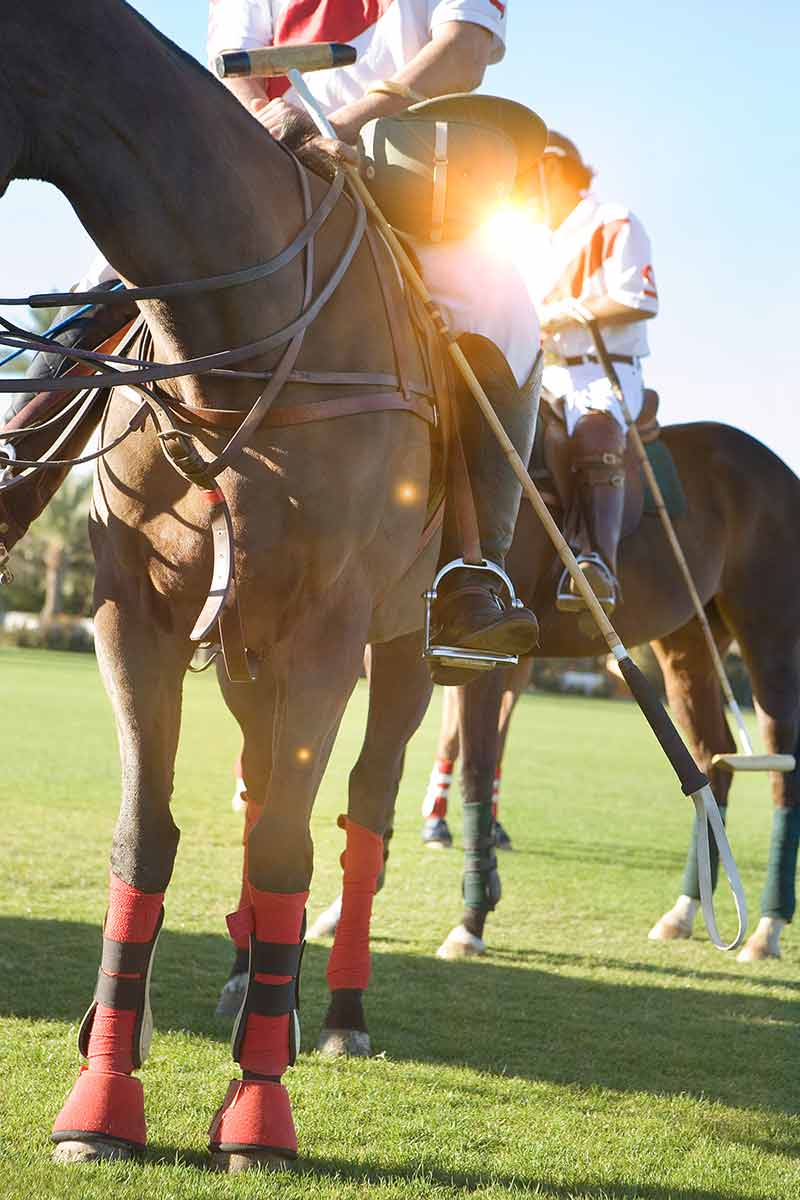
Polo is a sport for the rich (“The Sport of Kings”) yet it is more affordable in Argentina than in any other country.
The national team is undefeated since 1932! The flat terrain of the grasslands and pampas are ideal for the sport while the traditional of skilled horsemen (gauchos) means their status is no surprise.
The British brought the sport and Argentinians have certainly embraced it.
Argentina is the “Mecca of Polo”, partly because it has the most high calibre of players, all of whom have a recognised handicap.
Only 2 of the top players in the world are non-Argentinian.
It is a complex game, played at speed needing well-trained horses and significant skill in the rider.
Buenos Aires Province provides plenty of opportunity to learn its intricacies or just have a fun day out.
The best player the world has ever seen, Adolfo Cambiaso is based less than an hour from Buenos Aires Centre.
Recommended tour: From Buenos Aires: Polo Match, Lesson, and BBQ Day-Trip
12- Tango

Tango’s origins date back to the 1880s.
It is a dance done in pairs and it takes influences from both Europe and Africa.
It began in poor port districts either side of the River Plate, often in bars and brothels to attract custom.
Its popularity spread beyond its origins.
It developed over the years with Buenos Aires dancers regularly travelling to Europe.
Its erotic nature was a surprise to many countries when they first saw it.
At one point, teachers of the tango were banished from Paris.
There are tango histories in different neighbourhoods in Buenos Aires such as La Boca and San Telmo.
The dance lost its popularity around the time of the Great Depression but it revived briefly in the 1950s but declined again due to the disapproval of military dictatorships.
Since the late 1980s, tango has become almost a symbol of Argentina.
It is now on UNESCO Intangible Cultural Heritage lists.
Recommended: Buenos Aires: Piazzolla Tango Show with Optional Dinner
13- Asado Barbecues
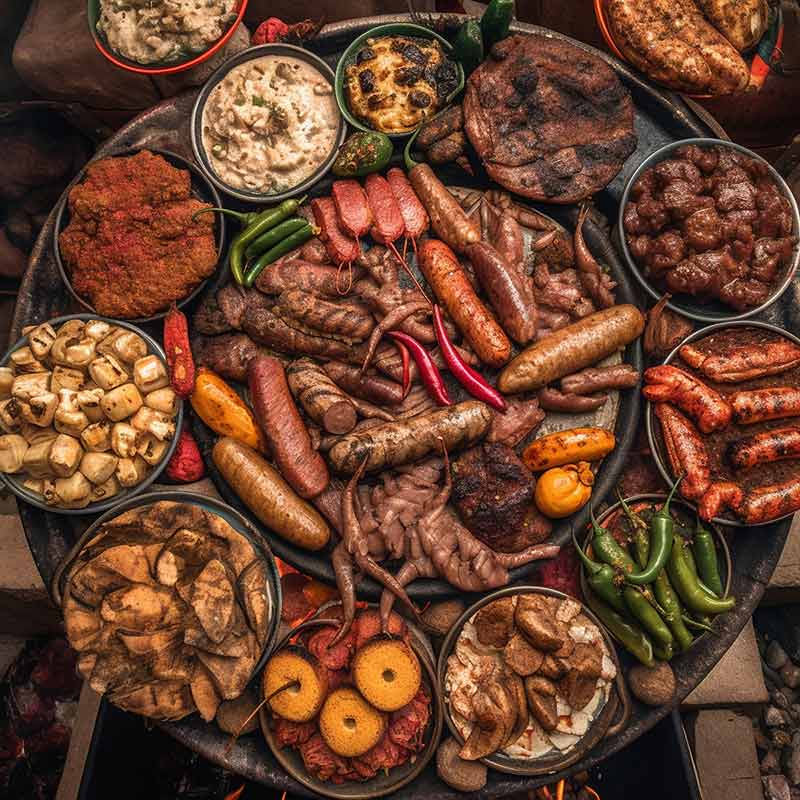
Argentinian love of meat is legendary and an Asado BBQ is a traditional event where people enjoy it.
The BBQ may involve a range of meat; beef, pork and chicken.
The meat is not marinated but it is usually salted.
It is cooked over an open fire or a grill (parrilla) with trays of meat put onto tables where there is already likely to be red wine, breads and side dishes, especially salads and grilled vegetables.
Ribs of beer have been popular at asados for many decades.
Sides are skewered and put over an open fire which uses quebracho wood because it does not produce much smoke.
The wood has already been made into charcoal.
Gauchos have always loved this and often drink mate as they eat.
Beer is also popular at these asado BBQs.
Entire carcasses may feature at large BBQs with the cooking process being slow.
Recommended tour: Buenos Aires: 9-Course Argentine Meat Tasting at Fogón Asado
14- Mate Tea
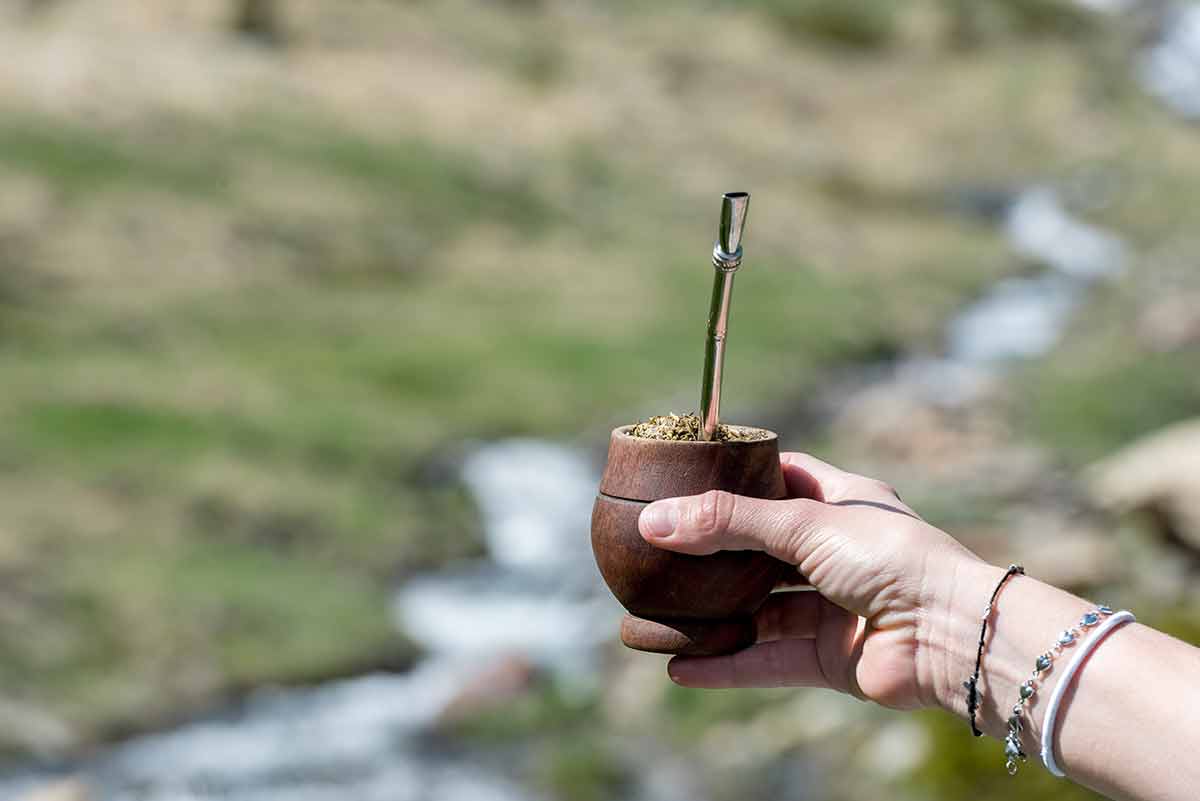
Mate is caffeine rich herbal tea that is drunk from specific vessels with a metal straw, a bombilla, traditionally silver.
The straw has two functions, drawing up liquid while preventing the herbs from coming up at the same time so it must act as a sieve as well, hence the design with small holes at the bottom.
The dried herbs can be refreshed time and again by adding hot water.
The vessels may be calabash gourds or in some regions, cattle horn.
Its popularity has now led to the herbs now being available in tea bag form and also as iced tea.
It is a drink that dates back many centuries, and was popular with the Spanish as well as indigenous peoples.
Mate is drunk throughout South America but Argentina is the largest producer with around 60% of the market.
Ironically, some of the production is exported to nearby countries where mate is popular.
Recommended tour: Argentinian mate tasting and class
15- Wine
Argentina is now the fifth largest wine producer in the world.
It is one thing that the country has to thank the Spanish for because they brought the grape and vineyards were developed.
Initially, winemakers were more interested on quantity rather than quality but that has changed because they realised, they had to improve to capture any of the world market.
Mendoza close to the Andes produces over half of Argentinian wine and its predominance in exports is even higher.
Few of the problems other countries face such as fungi, insects and moulds matter to Argentina because altitude and low humidity in the main wine areas.
As a result, organic wines are easy; no pesticides.
Ironically, the best known of Argentinian wines is Malbec, introduced by the French, not the Spanish.
Spain and Italy have also contributed to the varieties of grapes and hence wines that Argentina produces.
Recommended tour: Mendoza: Half-Day Wine Tour with Tastings
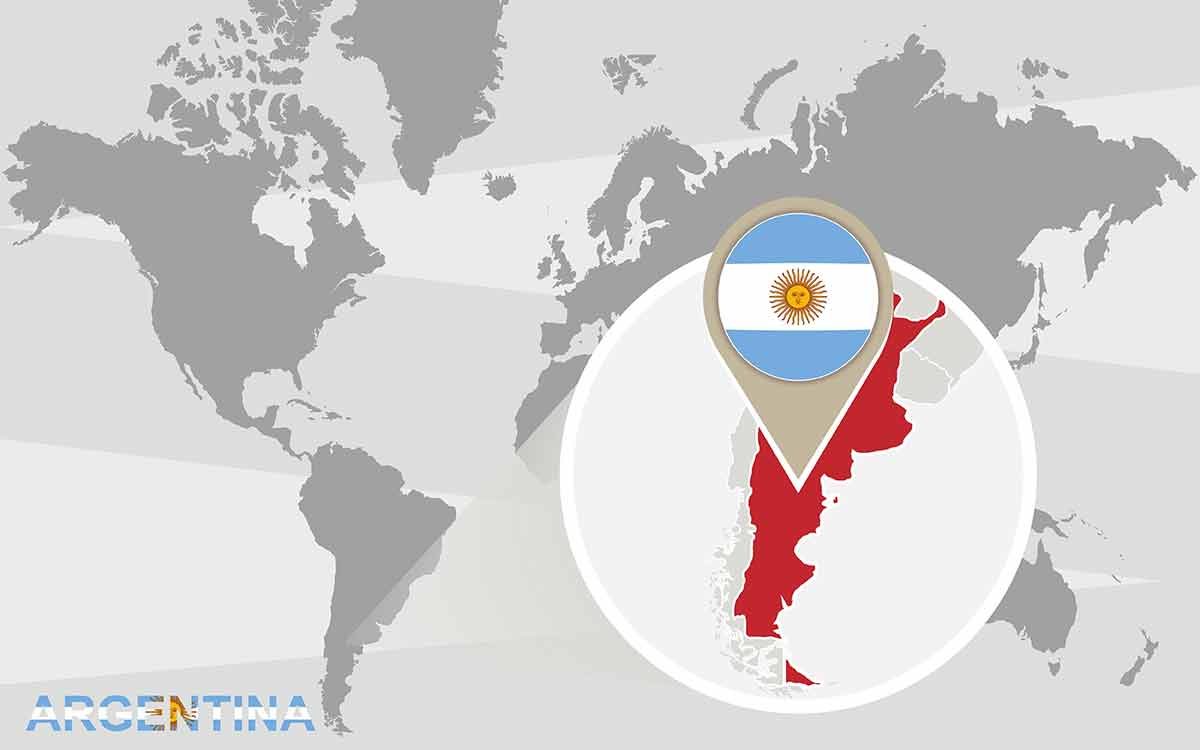
Plan Your Trip

Rent A Car – Find the best car rental rates at Discover Cars. They compare car hire companies to provide you with the best deal right now.

Find A Hotel – If you’re curious about this article and are looking for somewhere to stay, take a look at these amazing hotels.

